“Deebing Creek” was first published in the inaugural edition of MiddleGround journal.
https://safeground.org.au/deebing-creek/
Deebing Creek
by Margot Stewart
“If this goes there’s nothing else left.”
Stepping through the gate onto the old Deebing Creek mission site, I’m met with an overwhelming sense of peace. The bushland remains untouched, the wildlife flourishing overhead and the carefully erected camps work within the landscape, rather than against it.
But the peacefulness ends at the visual level of experience – this is a hotly debated site, caught between property developers and the Yuggera-Ugarapul people, the traditional owners of the land, who continue to, live, work and share, they have always done, on this meaningful site. This land faces the very real threat of development – unmarked graves and pristine bushland are set to be demolished and replaced by newly developed supermarkets, schools and over 2000 houses.
As we sit around a small, late afternoon fire that occasionally blows a waft of sweet-smelling smoke into our faces, activist and Yuggera-Ugarapul woman Shale Thompson paints a picture of the rich history of the land, often at odds with its peaceful appearance. As we sit amongst the rustling of insects and the soft breeze blowing in the shade, Shale, accompanied by her mother and daughter, recount to me the backstory of the Deebing Creek mission. Established in 1885, when the central Ipswich Queen’s Park mission was deemed too close to the town, the Presbyterian church moved the camp further out to Deebing Creek, aptly named so after ‘dibing,’ the Indigenous word for mosquito.
The church sent the people within the mission to work, taking their money and instead providing them rations. When Deebing Creek was deemed once again to be too close to the center of the expanding town, it was moved to Purga in 1915. The same year, they closed the Deebing Creek mission, and the Presbyterian church handed the land back to the government who converted it into Crown land – which was then sold to international developers in 2015. There is written proof that the land at Deebing Creek and neighbouring Ripley was purchased by Indigenous occupants of the mission, in exchange for their blood, sweat and tears generated whilst working the land. Regardless of ownership, this land has been and continues to be a sacred place within which the Yuggera-Ugarapul people practise culture, and operates within the larger reality that, within Australia, Indigenous sovereignty has never been ceded.
Despite the mission history of the land, the site also contains a rich spiritual connection and ancestral history – Shale recounts to me “People don’t understand how spiritual this place is. What we experienced with our old people here, our old people come to us. We see them sitting around the fire at night, sometimes. That’s how spiritual it is! They’re still here today.”
As we sit on two fallen logs, Shale and her mother, Roberta, point out to me every notable landmark within seeing distance of our seating arrangements – which includes an old well, a sky-scraping ancient bunya nut pine and her own grandfather’s tin hut, which he occupied until the late 1960’s. She tells me of the marked cemetery just down the road and laments the graves underfoot which remain unmarked and unseen, scattered across the entirety of the site. Because of these burials and the customs of the ancient tribes that once inhabited the land, there are significant parts of the site in which she, her mother and her daughters cannot step foot on – it is sacred land reserved for men’s business, and any unwanted visitor of the opposite sex is outcast through violent physical reactions.

Shale Thompson walks back towards the Deebing Creek camp
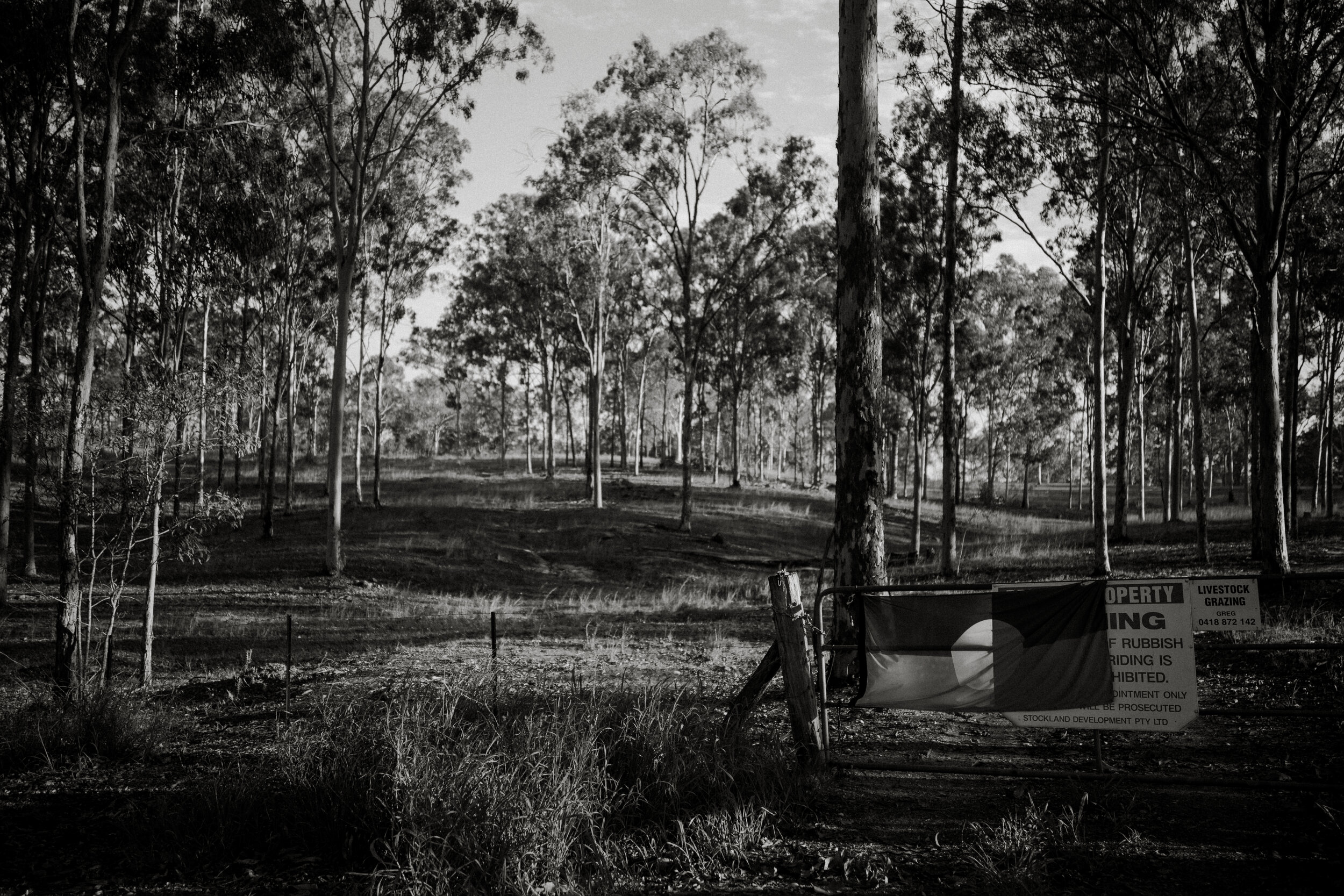
Property development sign on the border of the Deebing Creek Mission land

A property development sign on the edge of the site
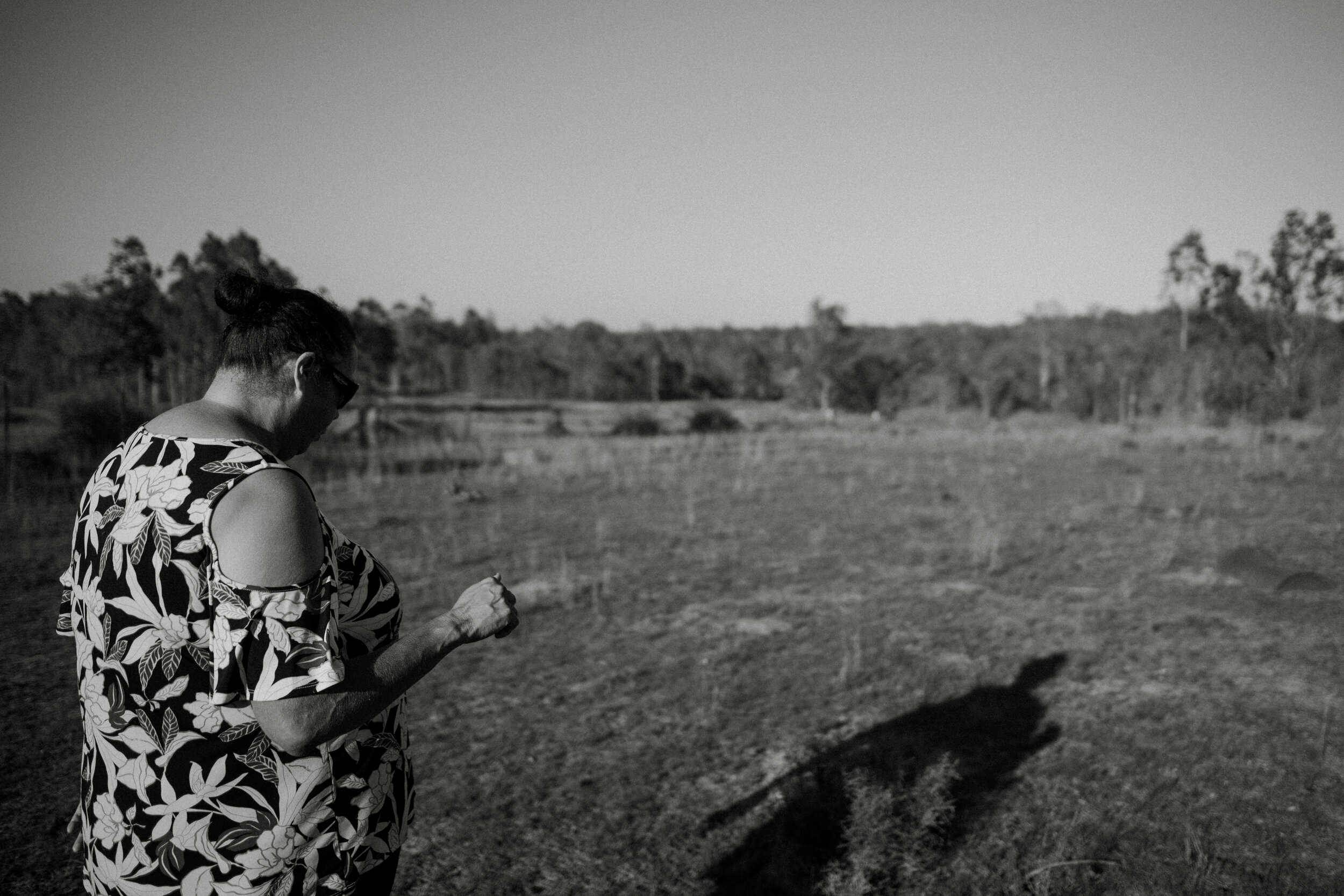
Shale Thompson walks me through the Deebing Creek site, showcasing the expanse of the land
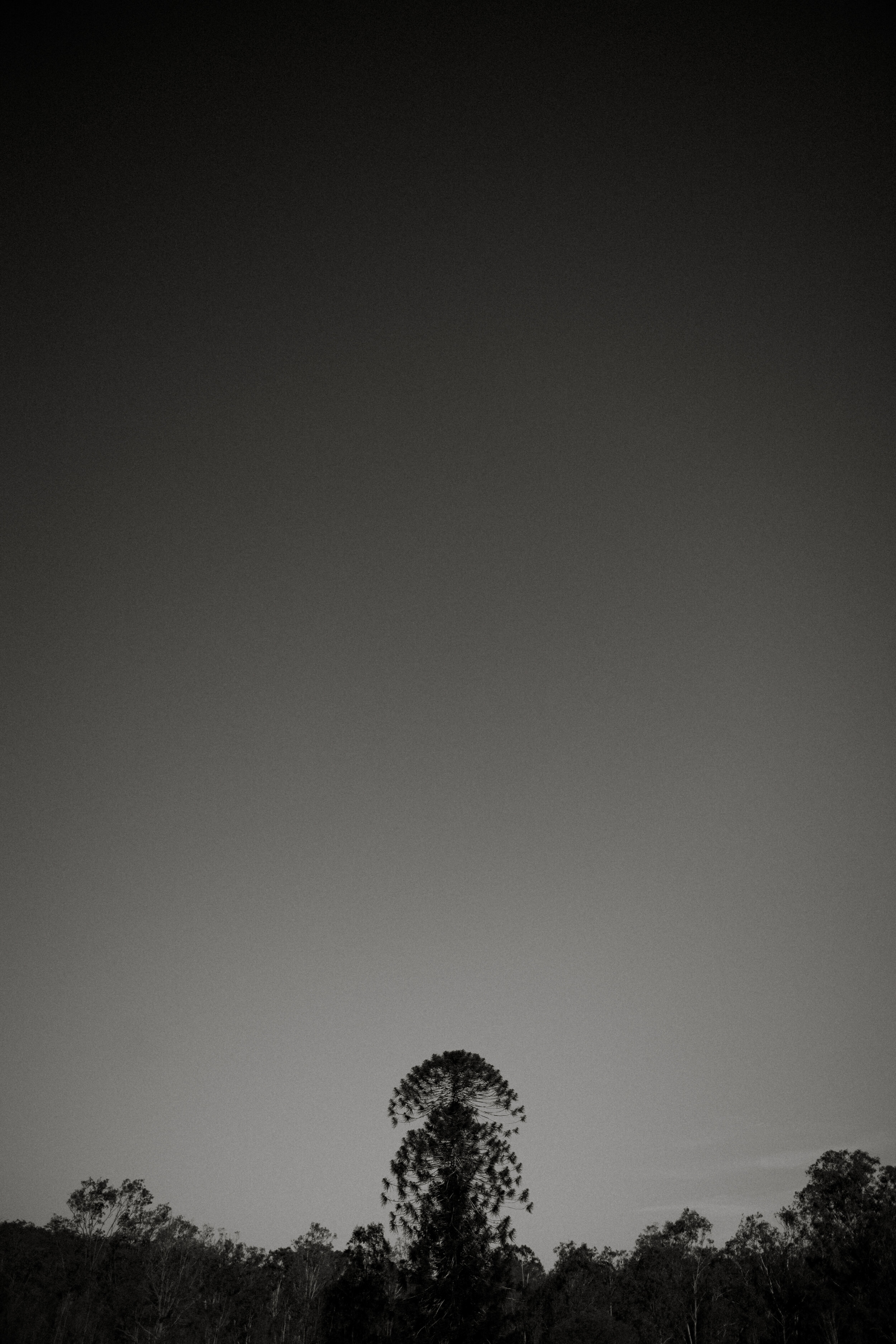
An ancient Bunya nut tree landmark stands on the Deebing Creek site, towering over the land

A Grampian Drive sign surrounded by untouched bushland on the way to the Deebing Creek Mission, a misleading name given to an ancient site
“It’s our identity you know… as Aboriginal people, we’re tribal people here. This is our land; this is our identity here and this is the only piece of land we have left.”
This occupation by activists isn’t the first resistance to occur at the site – in the 1980’s a camp was established to protest a proposed golf course, and after a week, protesters were successful in their efforts. Deebing Creek was purchased by Frasers Property in 2015, and it was only made known to the Indigenous population of Ipswich in early 2019 that this was in fact the old mission site – when the developers announced their intention to build on the land, they titled the site “Grampian Drive,” making no mention of its history. When Shale and other activists became aware of what site was actually slated for development, they immediately set up camp, and so continued Deebing Creek’s legacy of resistance, in honor of the land and the ancestors who came before.
“It’s our identity you know… as Aboriginal people, we’re tribal people here. This is our land; this is our identity here and this is the only piece of land we have left. The rest is all, even Ripley, is all sold up and developed. We want to hang onto this as much as we can, we want it back, we want it all back. The whole lot.”
“This is where they lived. They camped here. Our people.” The Deebing Creek resistance has adapted the historical and generational traditions of their families and ancestors to create a new resistance, one that carries, is buoyed by and comes from a place of familial significance. They have returned with their families to the land, which once housed their parents, grandparents, great grandparents and beyond, to resist, using historical methods of occupation which mirrors and is made strong by their lineage and the way they utilised the land.
In early 2019, police attempted to remove the campers from the site, demolishing their structures and preventing them from returning to the land. Alongside the campers, the public showed up en-masse to lend their support and successfully negotiated a return to the land – where they have been 24/7 ever since.
This isn’t a closed protest – whilst Shale and her family constantly occupy the land, the public is actively encouraged to be involved and the nearby residents of Deebing Heights housing estate support the protest. Local resident Alexandria Walker tells me how “the untouched bushland isn’t just a refreshing change from the urban development of inner-Ipswich, it’s also home to hundreds of native animals that the whole suburb cherishes. We desperately want to protect their habitat and our own community from the destruction any development would cause. The Indigenous people have treated this land and its animals with respect since long before we arrived, and I support their protest of Fraser Property’s housing plan. Their connection to the land is something that we cannot erase, that we shouldn’t disrespect, and whereas houses can be built elsewhere, their history with the Deebing Creek mission and gravesite is deeper than a plot of land that might be convenient for a multinational corporation to make money.”
You can’t paint a singular picture of modern resistance – that is part of its power. The ability to organise and adapt within any situation is what makes modern resistance so powerful – it does not have a singular form, leader or influence. Its power is in its multiplicity, diversity and inability to be singularly defined.
At Deebing Creek camp, there is an undeniable generational bond, whether living or past, which binds and supports the ongoing protest. There is intergenerational and spiritual experience that carries through, far beyond any living relatives – this occupation is informed by thousands of years of history, resistance and resilience informed by ancestors and resistances past. There is an undeniable generational and spiritual power behind the protest, its occupants and the land itself, further supported by the public.
The ultimate aim of this resistance is to urge the Queensland State Government to hand the land back to the Yuggera-Ugarapul people, so it will never face the threat of development again. The reality is this: however strong the resistance is, the Deebing Creek camp is faced with an immovable council who refuses to speak to them directly, and developers driven by Chinese investors who are determined to wait the campers out. Roberta solemnly relates to me the fact that the Ipswich City Council has refused to speak to them on this topic, and have not responded to requests for meetings from their lawyer. When I asked if the activists get the feeling that the developers are trying to simply ‘wait them out,’ Roberta responded with a laugh “we’ve got a long time to wait. I don’t think they can handle our waiting, our patience.” Shale adds “they’re wasting money as we’re sitting here.”
Later, as I’m guided by Shale across the land, we take in the towering bunya nut tree and the various camps that unexpectedly pop up, nestled amongst the trees, washing hanging from low branches, almost as if they were as natural as the untouched bushland itself. Shale takes me to the notable landmarks, discussing each with a sense of pride. We walk past her grandfather’s shack and onto the corroboree circle, where we part.
“If this goes there’s nothing else left.”

A Corroboree Circle on the Deebing Creek site, where some cultural practices take place on the land

A family portrait of Shale Thompson, her daughter Lekina and Shale’s mother Roberta Graham
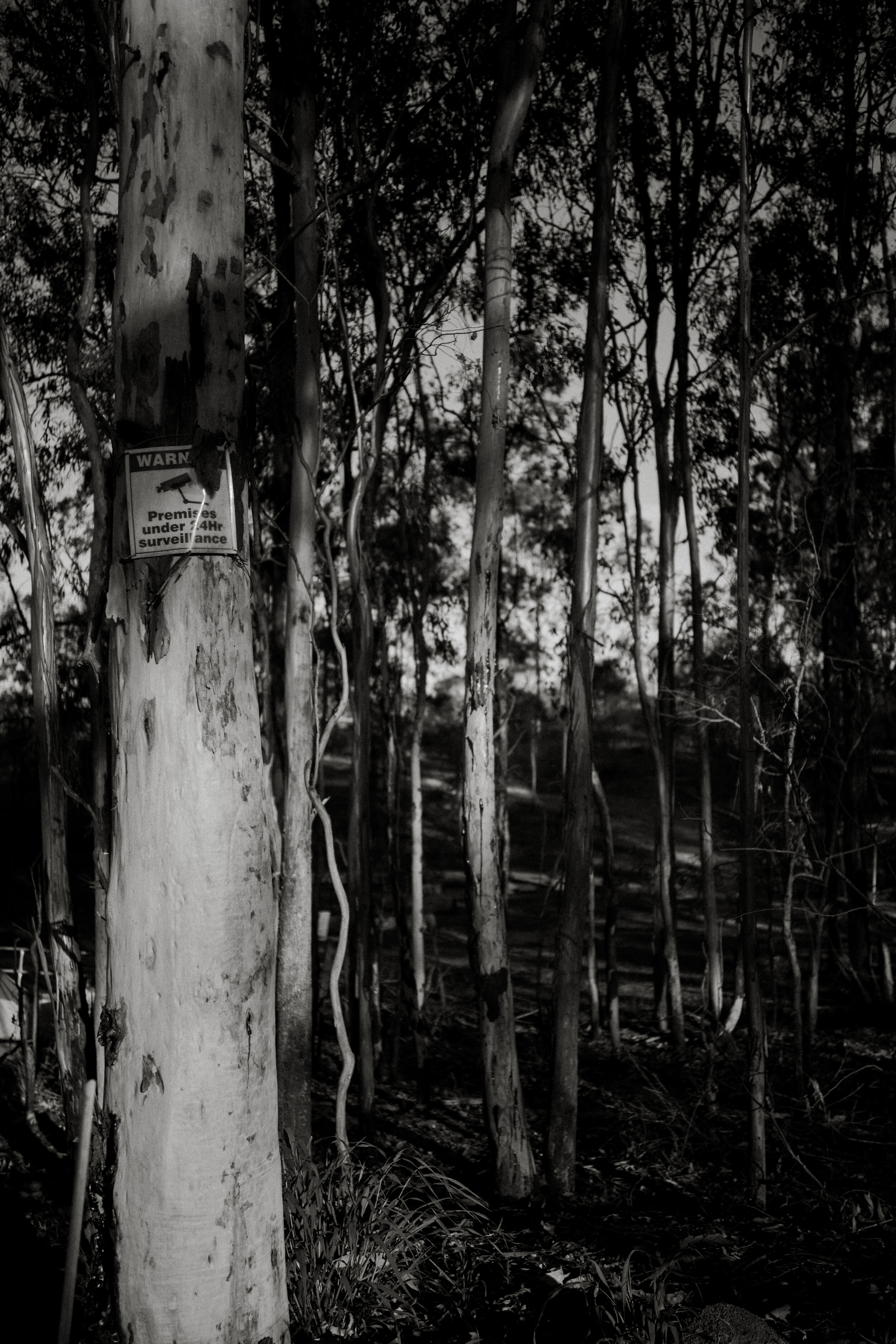
A tree stands shrouded in foliage at the entrance to the site showcases a CCTV warning sign
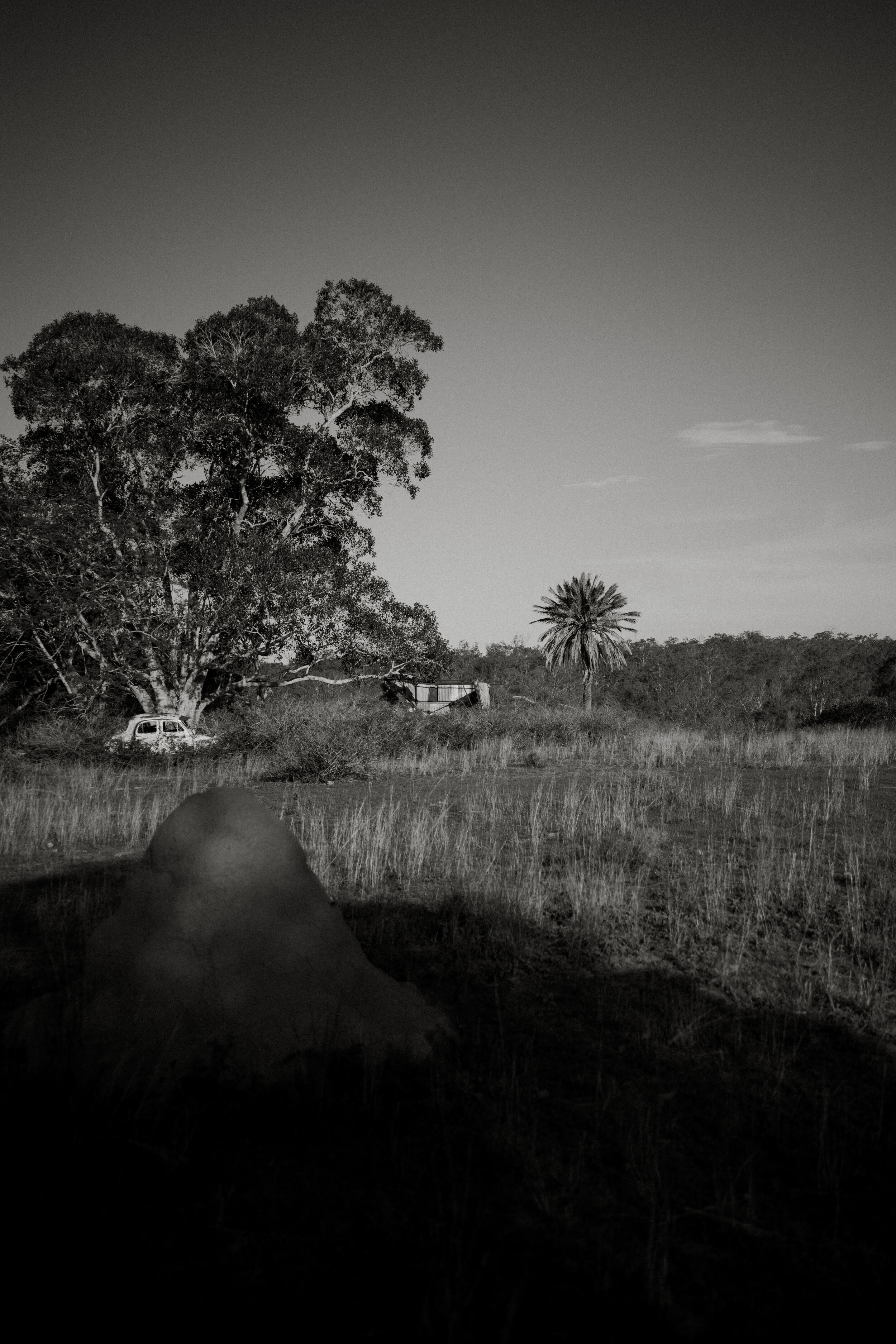
A portrait of the landscape, capturing an ant mound and Shale’s grandfathers shack, with it’s last occupant dating back to the 1980’s
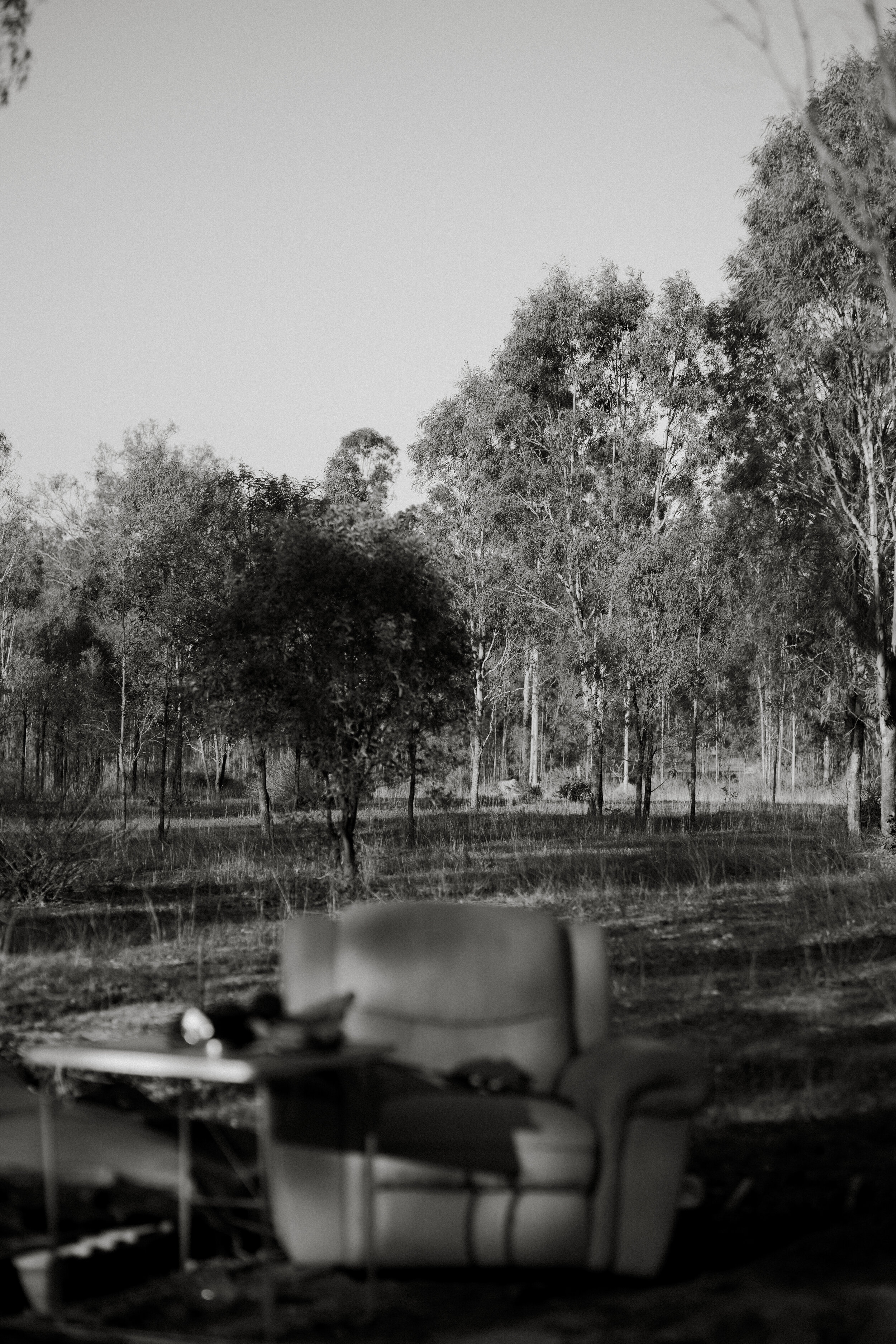
An unoccupied chair and table sits at the camp, seemingly blending into the bushland

An unoccupied chair and table sits at the camp, seemingly blending into the bushland
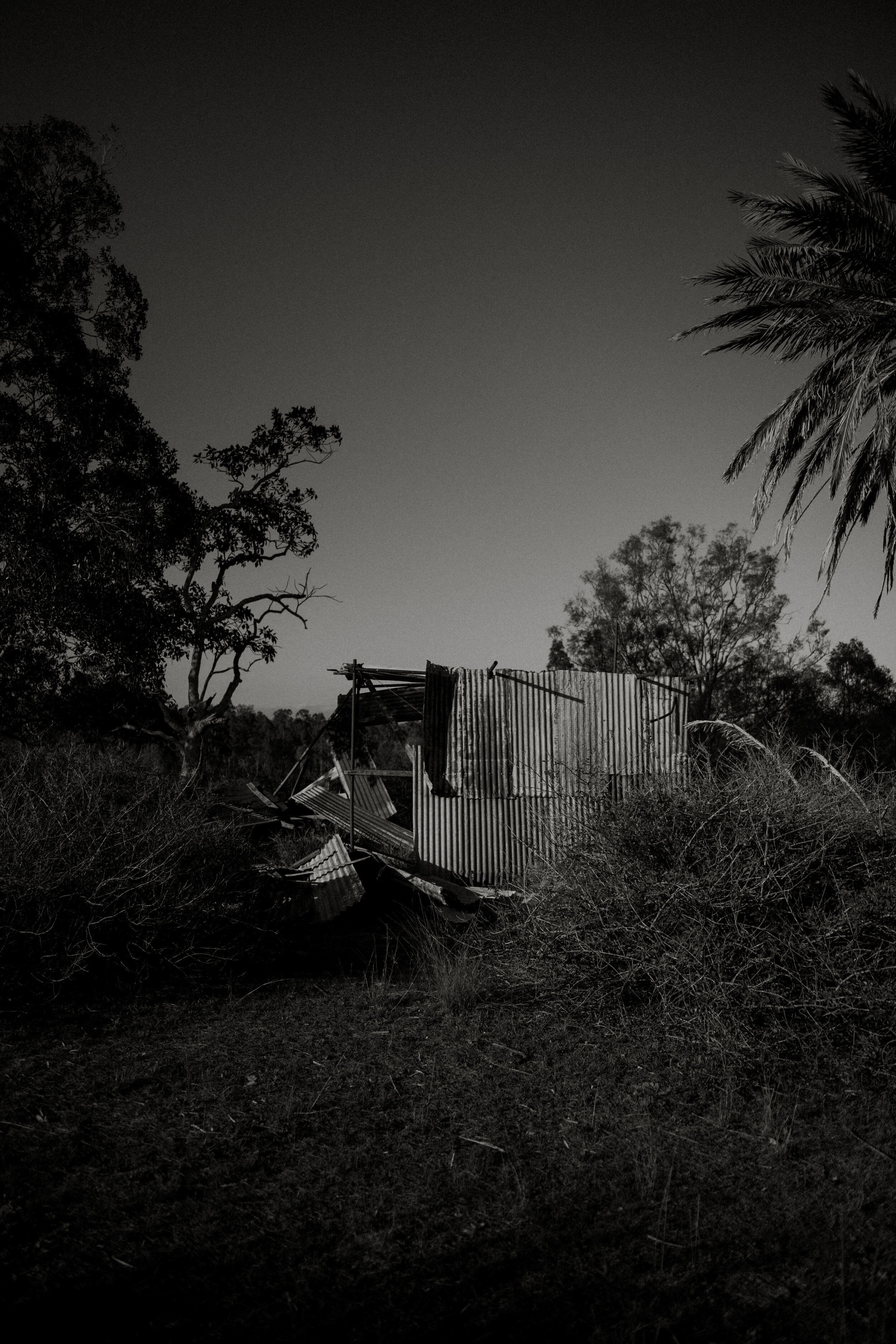
Shale Thompson’s grandfathers shack, now unoccupied, stands on the land as a reminder of generations past

A sign; ’Protect the land! Save Deebing Creek!’